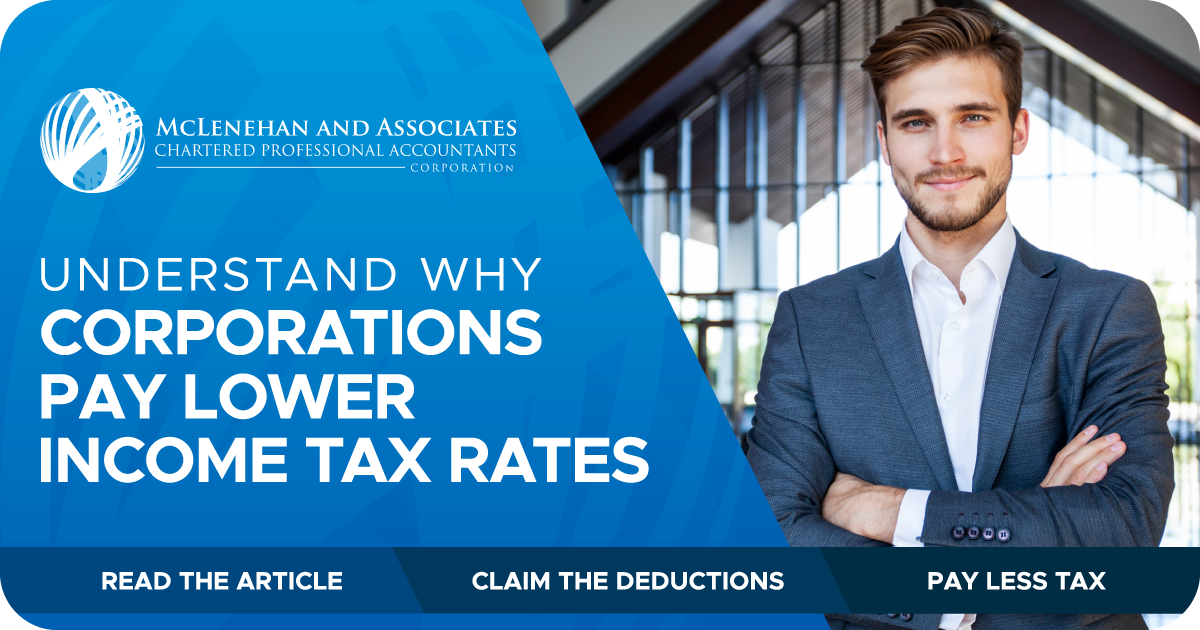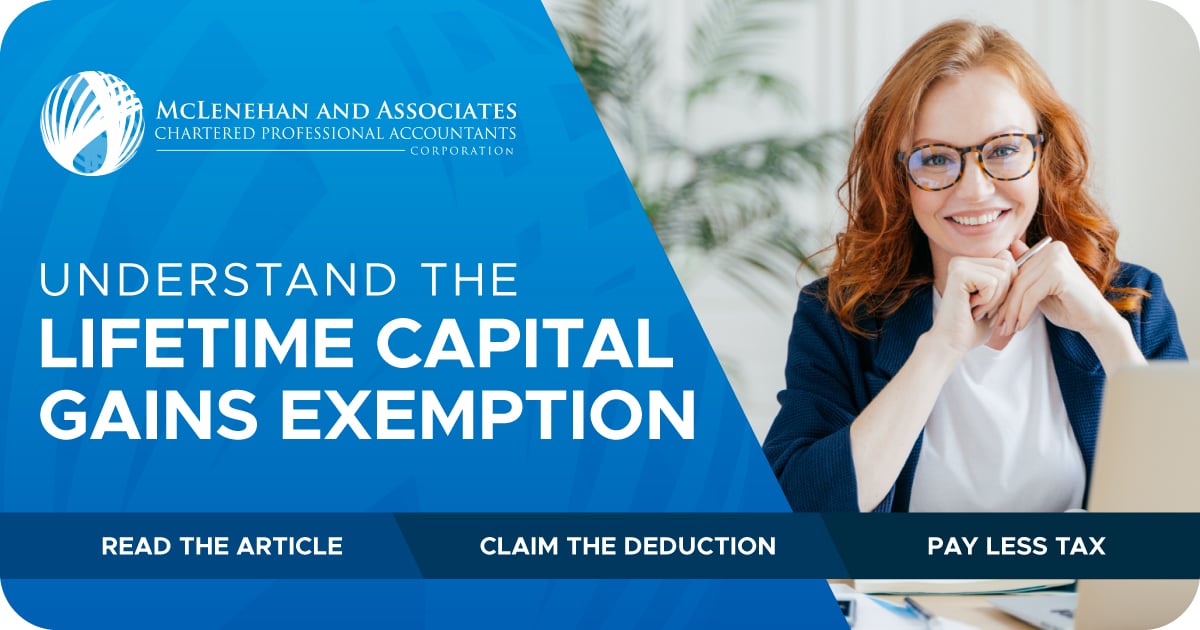Understand the Lifetime Capital Gains Exemption
The Lifetime Capital Gains Exemption (LCGE) allows Canadian incorporated small business owners to claim a deduction when selling shares of a...

Small businesses in Canada pay very low rates of tax on their income. That’s a positive thing, because after submitting your tax return, that extra money can go back into the business and help it to grow.
Of course, in order to benefit, it is important to be clear about what a company has to do to be eligible and how much the deduction is worth.
The deduction is a reduction in the corporate tax rate for businesses that are Canadian-controlled (known as Canadian-controlled private corporations, or CCPCs).
The reduced tax rate applies to active business income. That is, it applies to the first $500,000 of most business earnings for the year, except passive earnings such as from a specific business investment, property income, foreign business income, or from a personal services business.
Normally, corporations have to pay a Part 1 income tax of 28%. For 2021, the small business tax rate on the first $500,000 was 9% federally, and even lower — at 0% in Manitoba. Provincial rates apply based on where the corporation is headquartered.
In order to calculate your taxes payable after claiming the deduction, you should multiply the small business tax rate (that 9%) by the lesser of the following:
To be clear, the first $500,000 of business income refers to the total monetary value that a business receives for the products and services that it provides. For the SBD, only business income earned within Canada can be included.
For clarity, let's use an example. Rick has a consulting business that he operates from home. It generates $200,000 in net income per year. Since that is smaller than the business limit, that is the figure he has to use. Nine percent of his profits are $18,000, so that is how much his yearly corporate tax bill will be.
On the other hand, Janet has a bookshop that brings in $600,000 per year, so her tax is 9% of the $500,000, plus 28% of that extra $100,000. That amounts to $73,000.
If your business is headquartered in Manitoba you can calculate your tax bill using the small business deduction offered by the Manitoba government of 10% which reduces your provincial tax rate to 0%. Businesses can apply that rate on income that would be eligible for the federal SBD.
To fully benefit from the small business deduction, a corporation has to meet certain requirements.
Corporations with taxable capital in Canada of $15 million or more are not eligible for the deduction. Companies with taxable capital employed of $10-15 million will see the business limit reduced on a straight-line basis. So, for example, a business with $11 million in taxable capital employed in Canada will have a business limit of $400,000. A business with $12 million in taxable capital can receive the deduction on its first $300,000, and so on.
Since the start of 2019, the CRA has also been taking passive investment income into account when calculating the small business limit. A group of companies can earn up to $50,000 of passive investment income in their corporation without effecting their SBD deduction limit. When a group of companies exceed $50,000 of investment income the SBD gets reduced by $5 for every $1 of investment income. At $150,000 of investment income a group of companies will have no SBD at all.
Associated corporations must file an agreement to share the income that is eligible for the deduction. Such corporations include when a corporation controls another, when both corporations are controlled by the same person or a family or group of people, or where each corporation is controlled by a related group.
Finally, for a corporation to be considered Canadian controlled, it must be private, with none of its shares of capital stock listed on a stock exchange, and resident in Canada or incorporated in Canada. The company also cannot be controlled by one or many people who aren’t Canadian residents, nor can it be controlled by a public corporation (except for a prescribed venture capital corporation). “Controlled” includes companies whose shares are all owned by a non-resident or a public corporation.
Most small business owners identify the taxes they pay as their main concern. They argue that reduced taxes would allow them to have additional money in order to be able to strengthen the performance of their business.
Small businesses face hardships or obstacles that large businesses are less affected by, or not at all affected by. It is harder and more costly for small businesses to access the credit or financing that big businesses often use to inject more life into their business. For smaller companies, the tax savings mean a bit of extra income that is available for this purpose.
Tax compliance and other government regulation costs can be proportionately higher for smaller businesses, so this tax deduction helps offset that.
Small businesses also bear a greater burden when it comes to property and payroll taxes, as these must be paid whether there was a profit or not. A lower tax rate for small companies helps them to stay competitive, to reinvest portions of capital into expansion, to service debt, and to have greater flexibility overall.
For the above examples, Rick with his at-home business may feel like incorporating his small business is time-consuming. However, the tax savings are significant and usually worth it.
Some great ways to reinvest the tax savings into your small business include marketing and advertising, capital improvements, external acquisitions, your own training, or having a cash buffer.
For businesses that are run from home, remotely, or online, content marketing (videos, blogs, and so on), affiliate marketing, social media advertising, email campaigns, and search engine optimization are great ways to use a small amount of money to significantly expand the business.
A cash buffer, on the other hand, is a great safeguard for new small businesses that might come across unforeseen obstacles or expenses. A contingency fund can help you with cash flow issues, with quickly capitalizing on low prices, and with handling unexpected rent increases or fines.
Lastly, a great small business person understands that they are the leader of their company, so their skills and personal assets are important for the company’s development. Further training could include anything from classes at a local business school, communication or professional development, or a short online marketing class.

The Lifetime Capital Gains Exemption (LCGE) allows Canadian incorporated small business owners to claim a deduction when selling shares of a...

Gross profit margin might be the single most predictive factor about the success or failure of a business.

Holding corporations provide significant advantages to small business owners who run profitable companies and want to shelter their assets and...